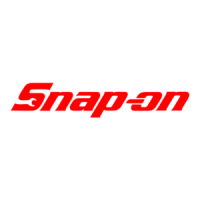III
SSaaffeettyy
IInnffoorrmmaattiioonn
Refrigerant
Risk of expelling refrigerant under pressure.
Wear safety goggles and protective gloves, user
and bystander. If any refrigerant gets into eyes,
flush with water and seek a doctor's aid
immediately, even though irritation may cease.
Do not remove master filter while under pressure.
Perform maintenance procedure for removing
master filter in
CChhaapptteerr
33CChhaannggiinngg
tthhee
MMaasstteerr
FFiilltteerr
.
Prevent refrigerant from contacting the skin.
Expelled refrigerate can cause injury.
Risk of explosion.
Do not use compressed shop air for leak detection
or to pressure test a system containing
refrigerant. Refrigerant can form combustible
mixtures at pressures above atmospheric and with
air concentrations greater than 60% by volume.
Do not heat a container of refrigerant above 125°F
(52°C).
Explosion can cause injury.
Risk of fire.
Do not use this equipment in the vicinity of spilled
or opened containers of gasoline.
Do not use
DDuuaall
33441122
or leak detector equipment if
R-12 substitutes are suspected. R-12 refrigerant
substitutes may be flammable.
Fire can cause injury.
Risk of poison.
Avoid breathing air conditioning refrigerant and
lubricant vapor or mist.
Do not allow refrigerant to contact open flame or
be drawn into a running engine. This can cause
refrigerant to become poisonous phosgene gas.
Use
DDuuaall
33441122
to remove refrigerant from air
conditioning systems.
Exposure can irritate eyes, nose and throat.
Risk of irritation to mucous membranes.
Avoid breathing A/C refrigerant and lubricant
vapor or mist. Exposure may irritate eyes, nose
and throat. To remove HFC-134a from the A/C
system, use service equipment certified to meet
the requirements of SAE J2210 (HFC-134a
Recycling Equipment). Additional health and
safety information may be obtained from
refrigerant and lubricant manufacturers.
Exposure can irritate eyes, nose and throat.

